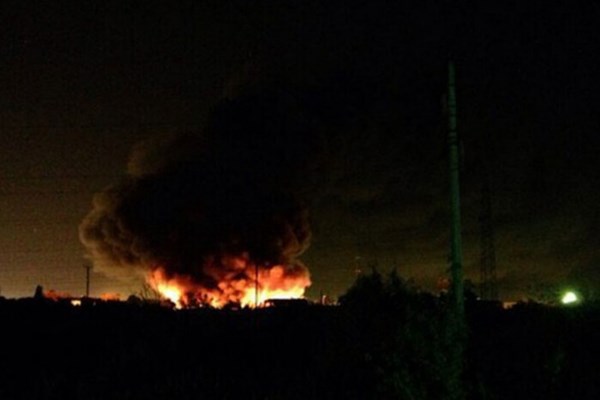Ammunition depo explosions disrupt Russian counteroffensive in Kursk Region
A Ukrainian strike on yet another Russian arsenal signals significant challenges for Russia's counteroffensive efforts in the Kursk region, military analyst Alexander Kovalenko notes. The Russian group of troops is now expected to face serious ammunition shortages.
An incident at the 67th Main Missile and Artillery Directorate arsenal in the Bryansk region compels a fresh look at the evolving dynamics in the Kursk region. The arsenal, where 152mm and 122mm ammunition, among others, detonated throughout last night and even into this morning, primarily supplied the "North" group of troops, specifically its sub-group—Kursk.
The Kursk grouping, numbering up to 40,000, includes an estimated array of mechanized equipment: about 150 tanks, around 500 BMPs (armored vehicles), approximately 200 artillery units, and up to 100 MLRS systems. Although these figures aren't extraordinary, Russian command has aimed to bolster these numbers.
The 67th GRAU arsenal alone, with its 20,000 tons of ammunition, represents about one and a half to two months of unhindered artillery fire at 6,000 rounds daily for 300 artillery systems, provided the barrels can withstand such stress.
On September 9-10, Russian troops launched a counteroffensive in the Kursk region, achieving limited success. While Russian forces controlled 1,245 km² of the Kursk region a month ago, by October 9, the control area had shrunk to 1,105 km². These figures suggest the counteroffensive has underperformed against numerically superior Ukrainian units. An imminent artillery ammunition deficit now looms.
It's clear Russian forces won't secure any significant success in restoring control over the Kursk region in October. As they attempt limited gains from their most favorable Snagost-Lyubimovka direction, Ukrainian forces will likely expand control elsewhere, aided by reduced Russian artillery activity.
The month of October could be considered another wasted opportunity for Russia in its effort to oust Ukrainian forces from the region. However, further strikes on facilities critical for supplying the "North" group could still occur before month’s end. Despite recent reinforcement attempts, the Kursk grouping’s combat readiness reveals stark deficiencies, surprisingly, on Russia's own soil.
Indicators suggest that some Kursk region localities may, for the first time in two decades, welcome the New Year with greetings from another president. By then, other presently evident zones and regional centers could join those under new leadership.
